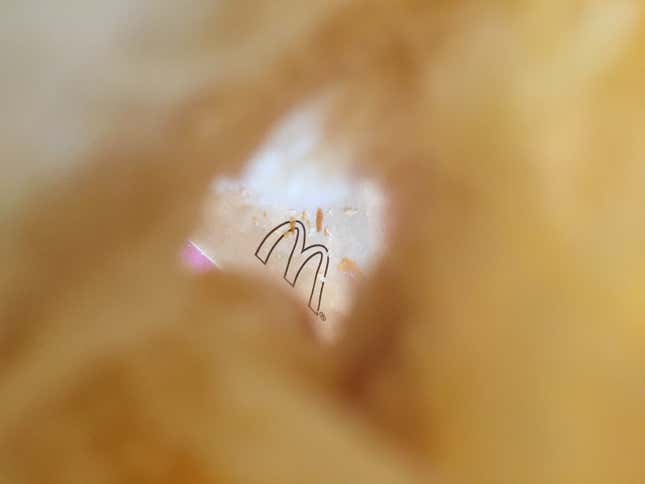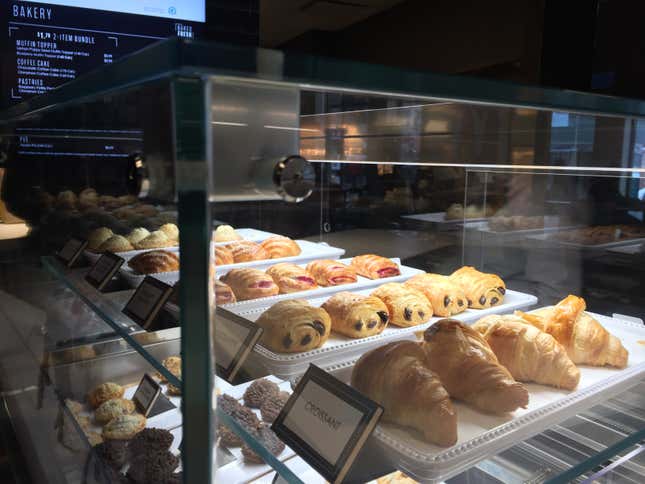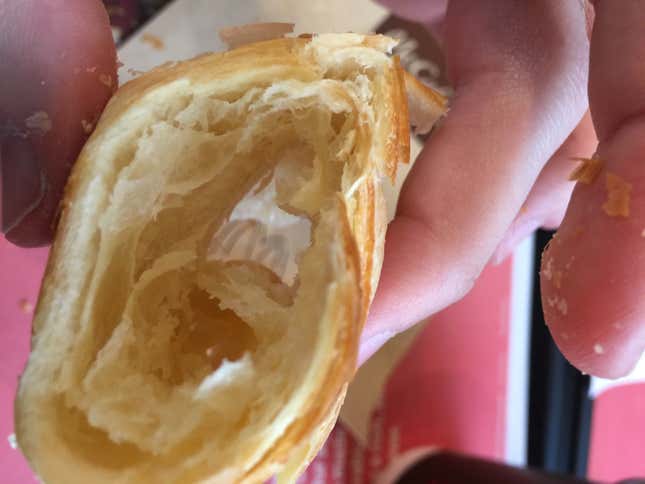It’s silly, but it’s true. I am in a croissant club.
The club’s mission is straightforward, find the best croissant in New York City by going from place to place as a group and rating its offerings on a scale of one to five across six categories. We judge for flakiness, softness, presentation, color, greasiness, and overall ‘je nais se quoi.’ The higher the number, the better the experience.
None of us—we are six—hold any sort of culinary qualification, only an inexplicable dedication to the pastry and the will to meet in earnest once every couple of weeks to psychoanalyze its state of being. It’s silly, but we make no pretense, the mission of our meeting is entirely pretentious.
The people at Lucky Peach magazine published a breezy but authoritative history of the croissant, in which its opening paragraph serves as a guiding principle for what to expect when sidling up to bakery counter and ordering one of the pastries with a toothy grin:
A freshly baked, quality croissant is a marvel. It is part architecture and part alchemy; a miracle rendered in butter, flour, and sugar that is simultaneously crisp and pillow-tender, ethereally buttery yet light enough to eat at the start of the day.
With that in mind, it was obvious our fledgling club would have to make a trip to McDonald’s hulking new ‘European-style’ location, which sits on the edge of Koreatown along Sixth Avenue and offers a selection of pastries, including croissants. The question in all our brains was the same: Could a massive chain—with beloved breakfast food items—serve up a croissant that commands its own space in a city of hundreds of bakeries? Burger King has a “croissan’wich,” but not a standalone croissant. Starbucks offers them, but it has made its name as a café, not a burger-selling fast food chain (it also bought a bakery to improve its food offerings).

Four members of the club met on a cloudy February afternoon to give the treats a try. Brett Fuss and Luke Cheng brought to the table the discerning tastes of designers. Zach Crizer and myself brought a journalistic sense of curiosity and willingness to be surprised. A fifth member, Lindsey Albracht, was unable to attend, but sent along her expectations via text:
“I would expect it to be like a chewy brick.”
Diving in
The consensus was nothing like Albracht expected—it would be unfair to judge McDonald’s croissants with such a broad brushstroke.
This particular McDonald’s feels fundamentally different from those in the rest of America. It’s sparse, with industrial stylings that keep it simple and straightforward. Customers order food from touch-screen computers along a wall, then either pick up orders from the counter, or find a table and wait for a server to deliver an order. Near the front, there is a large, glass display case featuring foods with a Parisian twist: filled pastries, chocolatines, and of course croissants.

The croissants cost $1.29 with tax, and arrived at our table in little brown bags. The first step was to pull them out and record first impressions:
Chase: First of all, the size is really disappointing.
Brett: Did you see the display case? They look more like biscuits than anything.
Zach: Mine has a some burning.
Chase: I think we can all agree they don’t look very appetizing.
Brett: Yeah, they look pretty basic.
Zach: If you put this in a normal place, do you think this would look like a bad croissant?
Chase: This literally looks like a piece of—
Zach: It looks like a nugget.
It’s true. They are a bit small. Most croissants, unless being marketed as ‘miniature’ are about the size of an adult’s hand. These could easily fit in the the palm of a hand. Perhaps they were engineered to be for a grab-and-go consumer instead of for sit down dining, Brett said. Still, at their price point it was hard to knock them on account of size—croissants in neighborhood coffee shops typically run around $3. We poked at them, then picked one up for closer inspection:
Chase: These could maybe pass the softness test. Oh wow, this is—
Zach: Bad?
Chase: It literally tastes like…dust?
Brett: Dust? It’s lacking butter.
Chase: There is no butter.
Zach: Of all places to not have the unhealthy thing!
A croissant can be too buttery. If the taste is overwhelming, it can detract from the overall experience. Yes, the buttery taste should be detected, but it should also work in concert with the crispy flakes and the soft interior. If butter becomes overbearing, the croissant diminishes in staying power. Just as important, though, is texture. The McDonald’s creation was crisp on the outside. The insides varied.

“It’s denser than I would hope for,” Luke said, biting into his. “It’s a little dry.”
Meanwhile, across the table, Brett was physically unrolling his croissant, noting its innards were stretchy and soft. Curious about the uniformly crispy outsides and differing insides, we began chatting with a server:
Chase: Do you know where the croissants come from? Are they shipped in?
Server: I suspect it’s not baked on the premises, but I’m not sure.[Server exits stage left to inquire with the manager; manager comes to table]
Manager: They just came like that and we put them in the microwave. We don’t make it here. It came from the factory.
Chase: Does it come as dough or pre-cooked?
Manager: Pre-cooked.[Manager exits stage left, the club huddles to discuss]
Brett: They’re microwaved.
Chase: They’re microwaved. My god! They’re microwaved!
It is doubtful McDonald’s literally microwaves its croissants—the company did not respond to a request for comment. More likely a large convection oven or warmer is used, Brett posited. Even still, the process of reheating very likely leads to the croissant’s biggest drawback: They are too crispy on the outside, creating a flaky mess and undesirable crunch. The insides, though, seem to maintain a bouncy softness. For all the problems with McDonald’s commodity croissant our consensus was that they probably are much tastier when they come right off the factory line.
“Fresh out of the oven these croissants were probably C+ croissants, maybe even B-,” was my thinking.
Time to rate
For ranking, each member of the club fills out a gridded card with their one to five rating. After the card is filled out, we take an average. Here’s what we decided, followed by its review:
This is the Hannah Montana of croissants. An easy example of engineered fame propped up by a major corporation in the hopes a mass audience will embrace the idea as something niche and unique. It’s contrived, but still unknown whether it will have a break-out moment (the New York City ‘Parisian-style’ McDonald’s location has been open only three weeks). The McDonald’s version of the croissant is a microwaved (literally) successor to a long line of pastries and syrupy-sweet breakfast items, including the McGriddles, perhaps the embodiment of the actress’ father, Billy Ray Cyrus.
The takeaway for us was that, while ‘commodity croissants’ would be a great band name, chains the size of McDonald’s have a lot of work to do before they’ll come close to providing mass access to these flaky delights.
